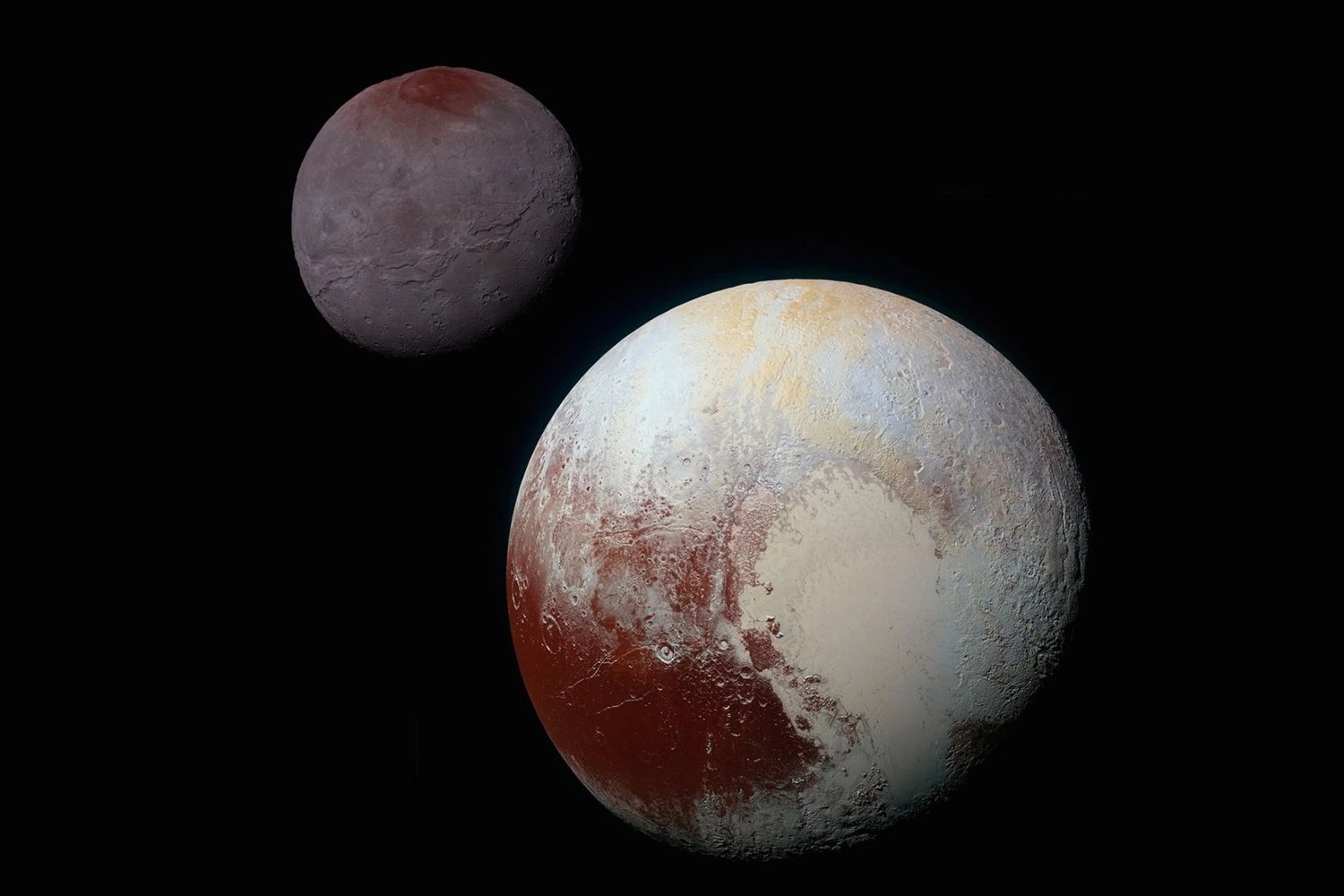The unexpected origin story of Pluto and its moon Charon
For billions of years, Pluto and its largest moon Charon have been opposite each other in a mutual tidal lock. Because it is about half the size of Pluto, the Moon and its planet are sometimes called a double dwarf planet system, suggesting that they may share a common origin history. Now scientists may have figured out how this unusual duo came to be, spinning as one object before splitting into a binary pair.
Pluto and Charon may have formed through a “kiss-and-catch” mechanism, with the two icy bodies colliding and temporarily coalescing, twirling in a cosmic dance before splitting into two objects that are forever bound in orbit. according to a new study published in Nature Geoscience. “Most planetary collision scenarios are classified as ‘hit and run’ or ‘hurt and merge.’ “What we found is something completely different – a ‘kiss and capture’ scenario where the bodies collide, stick together briefly and then separate while remaining gravitationally bound,” said Adeen Denton, a NASA postdoctoral fellow and lead author of the study. in a statement.
Charon is the largest of Pluto’s five moons, stretching 754 miles (1,214 kilometers), while the dwarf planet itself is 1,400 miles (2,253 km) wide. For years, Charon was thought to have formed in the same way as Earth’s moon, through a massive collision. In the Earth-Moon system, however, the colliding bodies behave more like liquids due to their larger sizes and the intense heat resulting from the collision. “Pluto and Charon are different – they’re smaller, colder and made mostly of rock and ice. “When we factored in the actual strength of these materials, we found something completely unexpected,” Denton said.
The researchers behind the study ran computer simulations of various collision scenarios and found that Pluto and Charon remained largely intact during their collision. They merged together as one oddly shaped object resembling a snowman, according to the model. Once entwined in a one-sided spin, the pair separated and Charon, being the smaller of the two, was doomed to a near-circular orbit around Pluto.
“What’s compelling about this study is that the model parameters that work to capture Charon end up putting it in the right orbit,” Eric Asfaug, a professor at the University of Arizona’s Lunar and Planetary Laboratory and co-author of the new study, said. in a statement. “You get two things right for the price of one.”
The study may also solve another Pluto mystery, namely how the dwarf planet possesses a theorized subsurface liquid ocean. As the two bodies separated from each other, the collision process caused a significant amount of internal heat to be transferred to the two celestial bodies, according to the study. This internal heat may have caused Pluto to develop a subsurface ocean.
“We are particularly interested in understanding how this initial configuration affects Pluto’s geological evolution,” Denton said. “The heat from the impact and subsequent tidal forces may have played a crucial role in shaping the features we see on Pluto’s surface today.”
The team plans to conduct follow-up studies to investigate how tidal forces may have affected the early evolution of Pluto and Charon when they were fused together, and how a similar process could have led to the creation of other binary systems.







